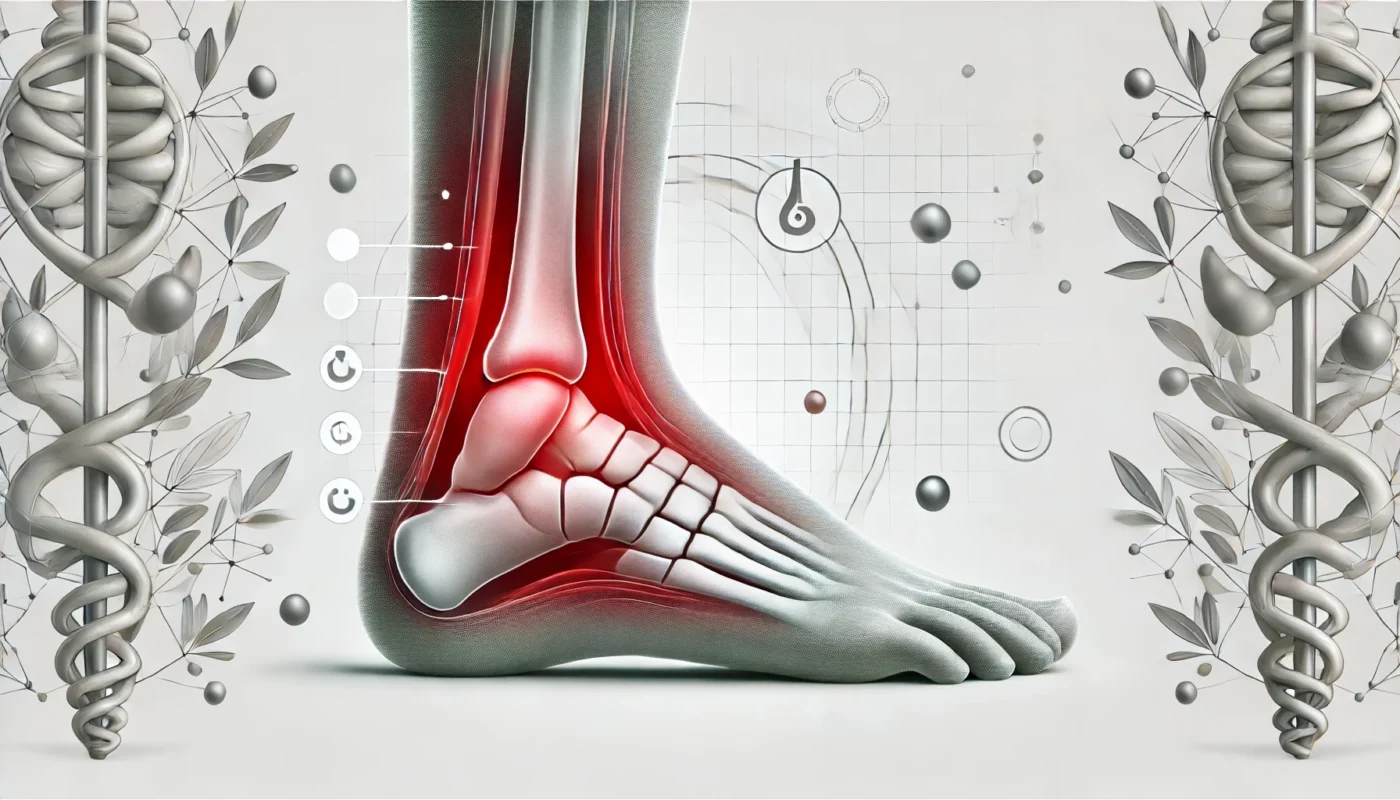Swelling, or edema, is the result of an accumulation of fluid in the body’s tissues. This condition can occur due to various factors, including injury, infection, or chronic diseases such as heart failure or kidney disease. While swelling is a common bodily response, it can be uncomfortable and may indicate an underlying health issue that requires attention.
Causes of Edema
Edema can be triggered by a range of factors. One common cause is injury, which can result in localized swelling as a natural part of the healing process. Infections also prompt the body to accumulate fluid as it delivers white blood cells to the area in an effort to combat the invading pathogens. Chronic diseases like heart failure, liver cirrhosis, and kidney disease can cause systemic edema due to impaired function of these organs, which play crucial roles in fluid balance.
Types of Edema
There are various types of edema, each associated with specific causes and symptoms. Peripheral edema affects the limbs and is often noticeable in the ankles and feet. Pulmonary edema, a more serious form, involves fluid accumulation in the lungs and requires immediate medical attention. Cerebral edema, affecting the brain, can be life-threatening and is often the result of injury, infection, or certain medical conditions.
Recognizing Edema
Recognizing edema involves noticing physical changes in the body. Common signs include swelling that causes clothing or jewelry to fit more tightly than usual. Pitting edema is a specific type where pressing on the swollen area leaves a lasting indent. Noticing these signs early can be crucial for seeking timely medical intervention, especially in cases related to underlying health conditions.
You May Also Like: Walking and Its Impact on Inflammation
Edema vs. Inflammation
Edema and inflammation are often confused due to their similar appearances, but they are distinct processes. Edema is primarily caused by fluid retention, whereas inflammation is the body’s immune response to injury or infection. Inflammation involves an influx of white blood cells and other immune factors to the affected area, resulting in redness, heat, and sometimes pus formation.
Mechanisms of Inflammation
Inflammation is the body’s protective response, initiated to eliminate harmful stimuli and start the healing process. It is characterized by the release of inflammatory mediators like cytokines and prostaglandins, which increase blood flow to the affected area. This response, while protective, can lead to redness, warmth, and swelling as the body works to repair the damage.
Differences in Symptoms
While both edema and inflammation can cause swelling, their symptoms diverge in other areas. Inflammation typically presents with pain, redness, and increased warmth in the affected region due to enhanced blood flow. Edema, on the other hand, may not always be painful and is often more uniform in its presentation, affecting larger areas without the associated heat and redness.
Treatment Approaches
Understanding the difference between these two processes is crucial for effective treatment. Edema often responds to treatments aimed at reducing fluid retention, such as diuretics and lifestyle changes like reducing salt intake. In contrast, inflammation may require anti-inflammatory medications, such as NSAIDs, or specific interventions targeting the underlying cause of the immune response.

The Symptoms of Swelling
Swelling is often visibly noticeable, but it can also manifest through other symptoms, such as:
Physical Manifestations
Swelling is commonly recognized by a visible enlargement of the affected area. This can vary from mild puffiness to significant distension, depending on the cause and location. In severe cases, the skin over the swollen area may become tight and shiny, indicating considerable fluid accumulation.
Functional Impairments
Swelling can lead to functional impairments, affecting mobility and dexterity. The tightness associated with swelling can make it difficult to move the affected area, leading to stiffness. This is particularly problematic when swelling occurs in joints, as it can significantly impact a person’s ability to perform daily activities.
Sensory Changes
In addition to visible changes, swelling can also cause sensory alterations. The skin over a swollen area might feel warmer to the touch, indicating increased blood flow. Additionally, numbness or tingling can occur if the swelling compresses nerves, adding to the discomfort and functional difficulties experienced by the individual.
Pain and Swelling in Hands and Feet
Hands and feet are common sites for swelling and pain due to their frequent use and exposure to various stressors. Conditions such as arthritis, carpal tunnel syndrome, and gout can lead to swelling and pain in these areas.
Arthritis
Arthritis is a group of conditions characterized by joint inflammation, which can cause swelling, pain, and stiffness. Rheumatoid arthritis, in particular, is an autoimmune disorder that targets the joints, leading to significant swelling and discomfort.
Different Forms of Arthritis
Arthritis encompasses various forms, each with unique characteristics. Osteoarthritis involves the degeneration of joint cartilage, resulting in pain and stiffness. Rheumatoid arthritis, an autoimmune condition, involves the body’s immune system attacking joint tissues, causing severe inflammation and swelling.
Impact on Daily Life
The impact of arthritis on daily life can be profound. Pain and swelling in the hands can hinder tasks such as writing, typing, or gripping objects, while in the feet, it can affect walking and balance. This can lead to a decreased quality of life, emphasizing the importance of effective management strategies.
Management and Treatment
Managing arthritis involves a combination of medications, lifestyle changes, and physical therapy. Anti-inflammatory drugs and pain relievers can help reduce symptoms, while exercises and ergonomic aids can improve joint function. Early intervention and a comprehensive treatment plan are key to managing this chronic condition.
Carpal Tunnel Syndrome
Carpal tunnel syndrome occurs when the median nerve in the wrist becomes compressed, leading to swelling, pain, and numbness in the hand and fingers. This condition is often caused by repetitive hand movements and may require lifestyle modifications or medical intervention.
Causes and Risk Factors
Carpal tunnel syndrome is often associated with repetitive hand movements, such as typing or assembly line work. Other risk factors include pregnancy, diabetes, and rheumatoid arthritis, which can increase swelling and pressure within the carpal tunnel.
Recognizing Symptoms
Symptoms of carpal tunnel syndrome include tingling, numbness, and weakness in the hand and fingers. These symptoms often worsen at night and can lead to difficulty in performing tasks that require fine motor skills, such as buttoning a shirt or holding a pen.
Treatment Options
Treatment for carpal tunnel syndrome ranges from conservative measures, such as wrist splinting and ergonomic adjustments, to medical interventions like corticosteroid injections or surgery. Addressing the condition early can prevent long-term damage and restore function.
Gout
Gout is a type of arthritis caused by the accumulation of uric acid crystals in the joints, leading to sudden and severe swelling and pain, often in the big toe. Dietary changes and medications can help manage gout symptoms.
Causes and Triggers
Gout is triggered by high levels of uric acid in the blood, which can result from factors such as a diet rich in purines, obesity, and excessive alcohol consumption. These crystals accumulate in joints, causing intense pain and swelling.
Symptoms and Diagnosis
The hallmark symptom of gout is sudden, severe pain in the affected joint, often accompanied by redness and warmth. Diagnosis typically involves a combination of medical history, physical examination, and blood tests to measure uric acid levels.
Management Strategies
Managing gout involves lifestyle modifications and medications. Dietary changes, such as reducing intake of purine-rich foods and increasing water consumption, can help lower uric acid levels. Medications, including anti-inflammatory drugs and urate-lowering therapies, are crucial in controlling symptoms and preventing flare-ups.

Does Swelling Cause Pain?
The relationship between swelling and pain is complex and multifaceted. Swelling itself can cause pain by:
Increasing Pressure
The accumulation of fluid can increase pressure on surrounding tissues and nerves, leading to discomfort. This pressure can compress nerves, resulting in sharp or throbbing pain. In severe cases, it can even lead to nerve damage if not addressed promptly.
Triggering Inflammation
Swelling can contribute to the inflammatory process, which involves the release of chemicals that stimulate pain receptors. This biological response is part of the body’s effort to protect and heal the affected area, but it can also amplify the sensation of pain.
Limiting Movement
Swelling can restrict movement, leading to stiffness and pain. This is particularly problematic in joints, where fluid accumulation can hinder motion and exacerbate discomfort, creating a cycle of pain and reduced mobility.
Variation in Pain Experience
However, not all swelling is painful, and the degree of pain experienced can vary depending on the underlying cause and individual factors. Some individuals may experience significant swelling with minimal pain, while others may find even mild swelling to be highly uncomfortable.
Managing Swelling and Pain
Effective management of swelling and pain requires a comprehensive approach that addresses both symptoms and their underlying causes. Here are some strategies to consider:
Lifestyle Modifications
Elevation
Elevating the affected area can help reduce swelling by promoting fluid drainage. This technique is particularly effective for swelling in the limbs and can be easily incorporated into daily routines by using pillows or cushions to support the affected area.
Compression
Wearing compression garments can help limit swelling and provide support to the affected area. These garments apply gentle pressure, encouraging fluid movement away from the swollen region. They are available in various forms, including sleeves, stockings, and wraps.
Hydration and Diet
Staying hydrated and maintaining a balanced diet can help prevent fluid retention and inflammation. Reducing salt intake and incorporating anti-inflammatory foods, such as fruits, vegetables, and omega-3 fatty acids, can further aid in managing swelling and pain.
Medical Interventions
Medications
Nonsteroidal anti-inflammatory drugs (NSAIDs) can help reduce inflammation and pain. Diuretics may be prescribed for edema, especially when it is related to conditions like heart failure or kidney dysfunction. Always consult a healthcare provider before starting any medication.
Physical Therapy
Physical therapy can help improve mobility, reduce swelling, and alleviate pain through targeted exercises and techniques. Therapists work with individuals to develop personalized exercise programs that strengthen muscles and enhance joint function.
Alternative Therapies
Acupuncture, massage, and herbal remedies may provide additional relief for some individuals. These therapies can complement traditional treatments, offering holistic approaches to managing pain and swelling. It is essential to discuss these options with a healthcare professional to ensure safety and efficacy.

Conclusion
Swelling and pain are interconnected symptoms that can significantly impact quality of life. By understanding the underlying mechanisms and differences between edema and inflammation, individuals can make informed decisions about their health and wellness. Whether through lifestyle changes, medical interventions, or alternative therapies, there are numerous strategies available to manage these symptoms effectively. As always, consulting with a healthcare professional is essential for personalized advice and treatment. Empowering individuals with knowledge and resources is a crucial step towards better health and well-being.
Further Reading:
What’s causing swollen feet and ankles?
gout, uric acid, symptoms, diagnosis, management strategies, swelling, pain, inflammation, lifestyle modifications, dietary changes, medications, physical therapy, alternative therapies, healthcare, wellness, edema, joint health, pain management, hydration, compression garments, nonsteroidal anti-inflammatory drugs (NSAIDs)
Important Note: The information contained in this article is for general informational purposes only, and should not be construed as health or medical advice, nor is it intended to diagnose, prevent, treat, or cure any disease or health condition. Before embarking on any diet, fitness regimen, or program of nutritional supplementation, it is advisable to consult your healthcare professional in order to determine its safety and probable efficacy in terms of your individual state of health.
Regarding Nutritional Supplements Or Other Non-Prescription Health Products: If any nutritional supplements or other non-prescription health products are mentioned in the foregoing article, any claims or statements made about them have not been evaluated by the U.S. Food and Drug Administration, and such nutritional supplements or other health products are not intended to diagnose, treat, cure, or prevent any disease.

